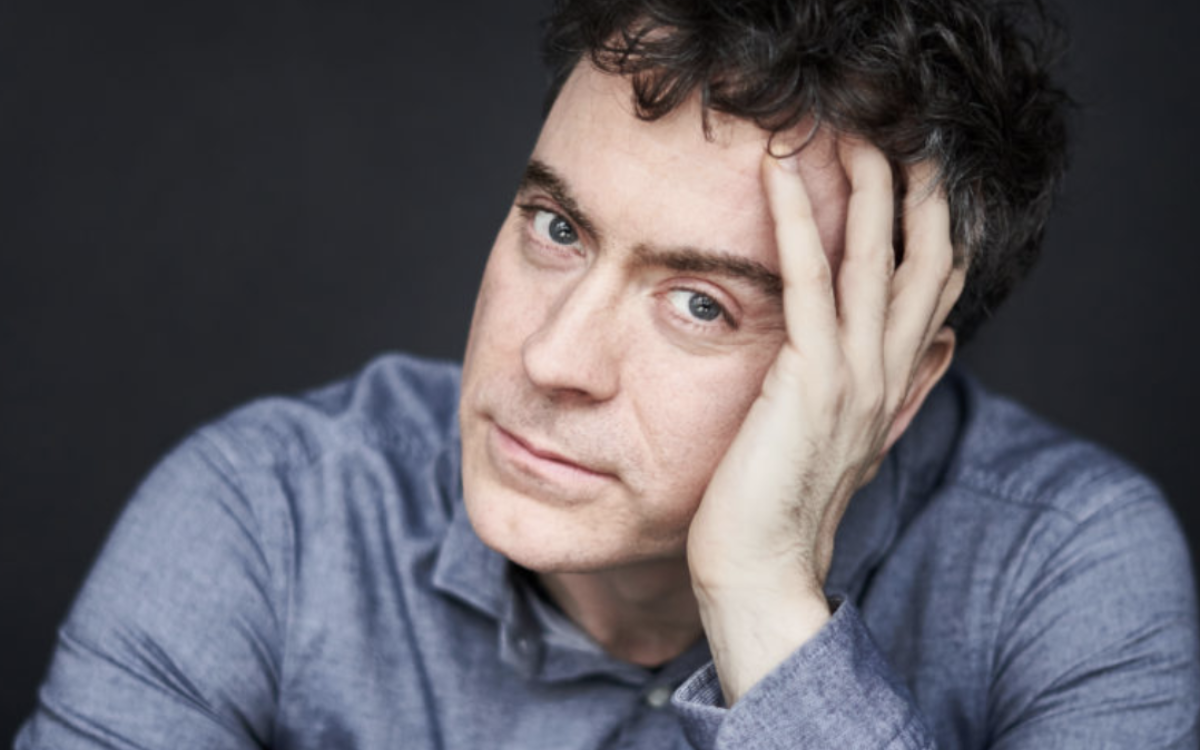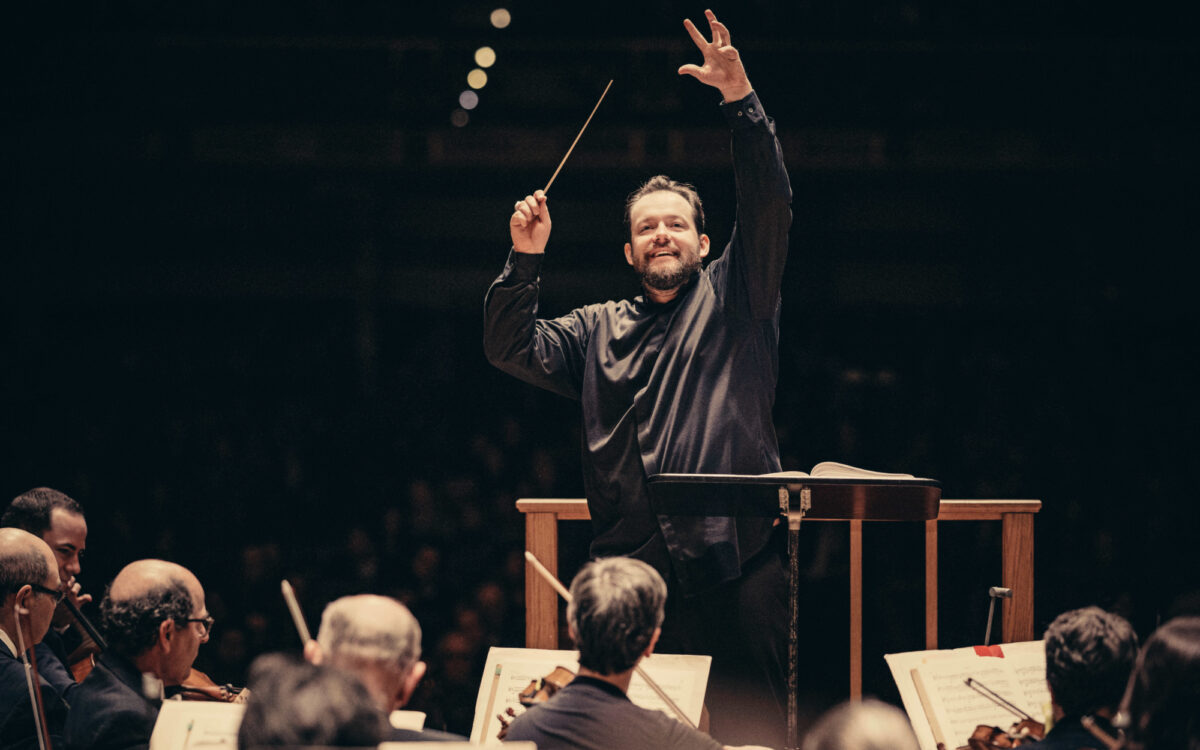Symphony of Psalms
Igor Fedorovich Stravinsky was born on June 17, 1882, at Oranienbaum, Russia, on the Gulf of Finland, and died on April 6, 1971, in New York. Symphony of Psalms was one of the works commissioned to celebrate the 50th anniversary of the Boston Symphony Orchestra. Stravinsky composed it at Nice and Charavines, France, between January and August 15, 1930. The score bears the dedication (in French): “This symphony composed to the glory of GOD is dedicated to the Boston Symphony Orchestra on the occasion of its fiftieth anniversary.” Serge Koussevitzky was to have conducted the world premiere with the BSO in December 1930, with a European premiere following a few days later in Brussels under the direction of Ernest Ansermet, but Koussevitzky fell ill, and the Boston performance was postponed. As a result, the first performance was given by the chorus and orchestra of the Brussels Philharmonic Society under Ansermet on December 13, 1930, the BSO’s American premiere performances under Koussevitzky following a week later on December 19 and 20, with the Cecilia Society Chorus, Arthur Fiedler, conductor.
The score of the Symphony of Psalms calls for four-part chorus (Stravinsky preferred, but did not insist on, children’s voices for the soprano and alto parts) and an orchestra of 5 flutes (5th doubling piccolo), 4 oboes, English horn, 3 bassoons, contrabassoon, 4 horns, one small trumpet in D, 4 trumpets in C, 3 trombones, tuba, timpani, bass drum, harp, 2 pianos, cellos, and double basses.
The Boston Symphony introduced new works before 1930, but it rarely—if ever—commissioned them. Even before the turn of the century the orchestra gave the world premieres of many American works, mostly by Boston composers, and, of course, American premieres of the newest compositions from Europe. Serge Koussevitzky’s decision to commission a group of new pieces from the leading composers of the day to celebrate the orchestra’s first half-century began a tradition that continues to the present. His invitation to celebrate the orchestra’s anniversary produced such works as Hindemith’s Konzertmusik for strings and brass, Roussel’s Third Symphony, Copland’s Symphonic Ode, Hanson’s Second Symphony, and the work regarded by many as one of Stravinsky’s greatest, the Symphony of Psalms.
Koussevitzky gave Stravinsky carte blanche in determining the form and character of his work. The composer was not interested in a traditional 19th-century symphony; he wanted rather to create a unique form that did not rely on custom but would nonetheless be a unified whole. He had had a “psalm symphony” in mind for some time and decided to develop this notion for the commission. His publisher, meanwhile, had expressed the hope that the new work would be something “popular.” As Stravinsky recalled:
I took the word, not in the publisher’s meaning of “adapting to the understanding of the people,” but in the sense of “something universally admired,” and I even chose Psalm 150 in part for its popularity, though another and equally compelling reason was my eagerness to counter the many composers who had abused these magisterial verses as pegs for their own lyrico-sentimental “feelings.” The Psalms are poems of exaltation, but also of anger and judgment, and even of curses. Although I regarded Psalm 150 as a song to be danced, as David danced before the Ark, I knew that I would have to treat it in an imperative way.
The passages that Stravinsky selected are the closing verses of Psalm 38, the opening verses of Psalm 39, and the whole of Psalm 150 in the Latin text of the Vulgate. (To avoid confusion, it is worth noting that, owing to different textual traditions, the Vulgate numbers almost all of the Psalms differently from the King James Version and all later translations used in the Protestant and Jewish traditions; in those translations, the texts of the first two movements come from Psalms 39 and 40, respectively. Psalm 150 has the same numbering in both systems.)
Stravinsky began by composing the fast sections of the last movement. Indeed, the repeated eighth-note figure heard on the words “Laudate Dominum” was the very first musical idea that suggested itself. This, followed by a breathtaking rapid triplet passage, is strikingly reminiscent of Jocasta’s words “Oracula, oracula” in the composer’s Oedipus Rex; the reminiscence of the earlier score suggests that in some ways the Symphony of Psalms fulfills the Christian implications of that humanistic opera based on a classical Greek drama.
After finishing that fast music, Stravinsky started at the beginning of the work. He took a motive from what he had already composed of the last movement—a pair of interlocked thirds—and derived from it the root musical idea of the whole score. The first movement, a cry of “Hear my prayer, O Lord,” was composed “in a state of religious and musical ebullience.” The opening chord is one of those Stravinskian sonorities that is so unusual and so striking that it is possible to recognize the work at once from that single sound. It is a simple E minor triad, but contrary to all of the normal prescriptions of musical scoring, the note that is most frequently sounded is G, the third degree of the scale, which appears in four octaves on many instruments. The orchestral introduction contains long-flowing lines (which prefigure the voice parts) and running sixteenth-note passages. When the chorus enters, the rhythmic background slows to a steady eighth-note pattern presenting explicitly the interlocked thirds that make up the root motive, over which the voices utter their plea, emphasizing the expressive semitone E-F; this has reminded many listeners of the Phrygian mode of plainchant, though Stravinsky disavowed any intention of recalling traditional church music. Nonetheless, the semitone rising and then falling again is an age-old emblem of lamentation and perfectly expresses the plea “Hear my prayer.” Each of these elements functions as a self-contained block, often punctuated by a repetition of that opening chord, with its curious emphasis on G. Finally, as if in answer to this insistence, a climactic passage builds up with long choral phrases and increasing dynamic energy in the orchestral part to conclude on a massive G major triad, the extended musical goal of the movement and a climax of powerful effect.
That G major chord provides the harmonic link to the second movement as well, functioning as the dominant of C minor. Following the increasingly intense prayer of the opening, the second movement represents the believer waiting for the Lord’s response. Stravinsky called the movement “an upside-down pyramid of fugues.” There is one fugue for the instruments stated at the outset by flutes and oboes, another for the chorus. Both are fully and elaborately developed with strettos and combined statements. The basic motive of the symphony here takes the form C–E-flat–B–D, with the third note at the higher octave, giving a new, yearning shape to the subject of the instrumental fugue. The choral fugue enters in E-flat minor with the lower instruments providing the accompaniment by way of their first crack at the instrumental fugue. A climactic choral passage in octaves (“He has put in my mouth a new song”) is accompanied by strettos of the instrumental fugue in sharply dotted rhythms and leads to the movement’s conclusion in E-flat.
After the plea for aid and the testimony that God has put a new song into the singer’s mouth, the last movement presents this new song. Stravinsky noted that, although he had begun working on the Symphony of Psalms with the fast music of the last movement, he could not compose the slow introductory section before writing the second movement because that introduction—“Alleluia”—is the answer to the prayer. The rest of the slow introduction was originally composed to the Slavonic words “Gospodi pomiluy,” cast as a prayer to the Russian image of the infant Christ with orb and sceptre. It is extraordinarily elevated, stately music, with the voices and instruments suggesting the somber joyfulness of church bells ringing for a slow procession. The fast section—with its rushing triplets in brass and piano—Stravinsky admitted was inspired by a vision of Elijah’s fiery chariot climbing the heavens. At the end of all this energetic jubilation, the slower opening material comes back for a wonderfully intense quiet conclusion. The long phrases of the chorus carefully and repeatedly filling in the interval from E-flat down a minor third to C suggest that the conclusion will be in C minor. But as one last time the “new song”—“Alleluia”—is breathed out by the chorus, the orchestra calmly brings matters to a bright close by inserting E-natural—which produces the major mode—over the closing tonic C, a conclusion of overwhelming serenity in a timeless mood.
Steven Ledbetter
Steven Ledbetter, a freelance writer and lecturer on music, was program annotator of the Boston Symphony Orchestra from 1979 to 1998.
The first American performances of Symphony of Psalms were given by Serge Koussevitzky and the Boston Symphony Orchestra, with the chorus of the Cecilia Society, Arthur Fiedler, conductor, on December 19 and 20, 1930, repeating it on the same program.


